From crunchy, velvety fried artichokes to matzah fritters soaked in honey and studded with pine nuts and raisins, the Jews of Rome have a centuries-old passion for frying foods.
This obsession is evident year-round in the many restaurants that line the main street of Rome's historic Jewish quarter. There, menus invariably include fried artichokes along with fresh fried anchovies, battered baccalà (salted cod) and stuffed risotto croquettes. But the Roman Jewish donut frenzy peaks at Hanukkah, when eating fried food is paramount.
For fishzetti fritti (literally, “fried pieces”), use vegetables such as zucchini, mushrooms, onions, potatoes, cauliflower, sliced artichokes, and parsnips. (Rebecca Peloquin / For The Times)
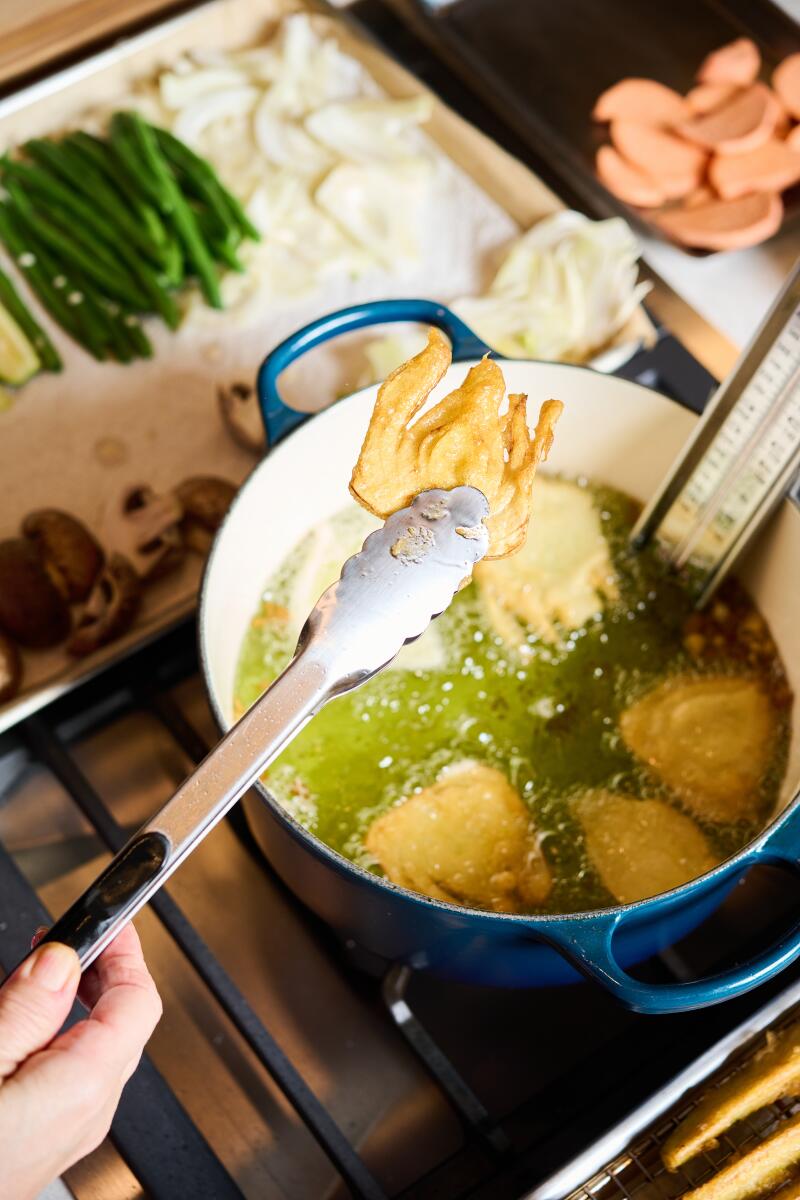
Mixed fried vegetables, commonly known as fritto misto, They are loved by all Romans, but the frying method comes from Roman Jewish cuisine. (Rebecca Peloquin / For The Times)
Hanukkah, celebrated this year from December 7 to 15, commemorates the victory of a small Jewish army called the Maccabees over the ancient Greeks and the rededication of the Holy Temple in Jerusalem. As the story goes, the Maccabees only found enough olive oil among the ruins of the Temple to light their menorah for one night, but the oil miraculously burned for eight nights. That's why frying in oil is an essential part of the holidays. It is a source of joy and comfort every year at Hanukkah, and particularly this year, as the world grapples with war and grief in the Middle East.
Ashkenazi Jews traditionally enjoy French fry latkes, and Sephardic Jews eat a variety of donuts and other delicacies. But in Rome, the potential for frying is endless.
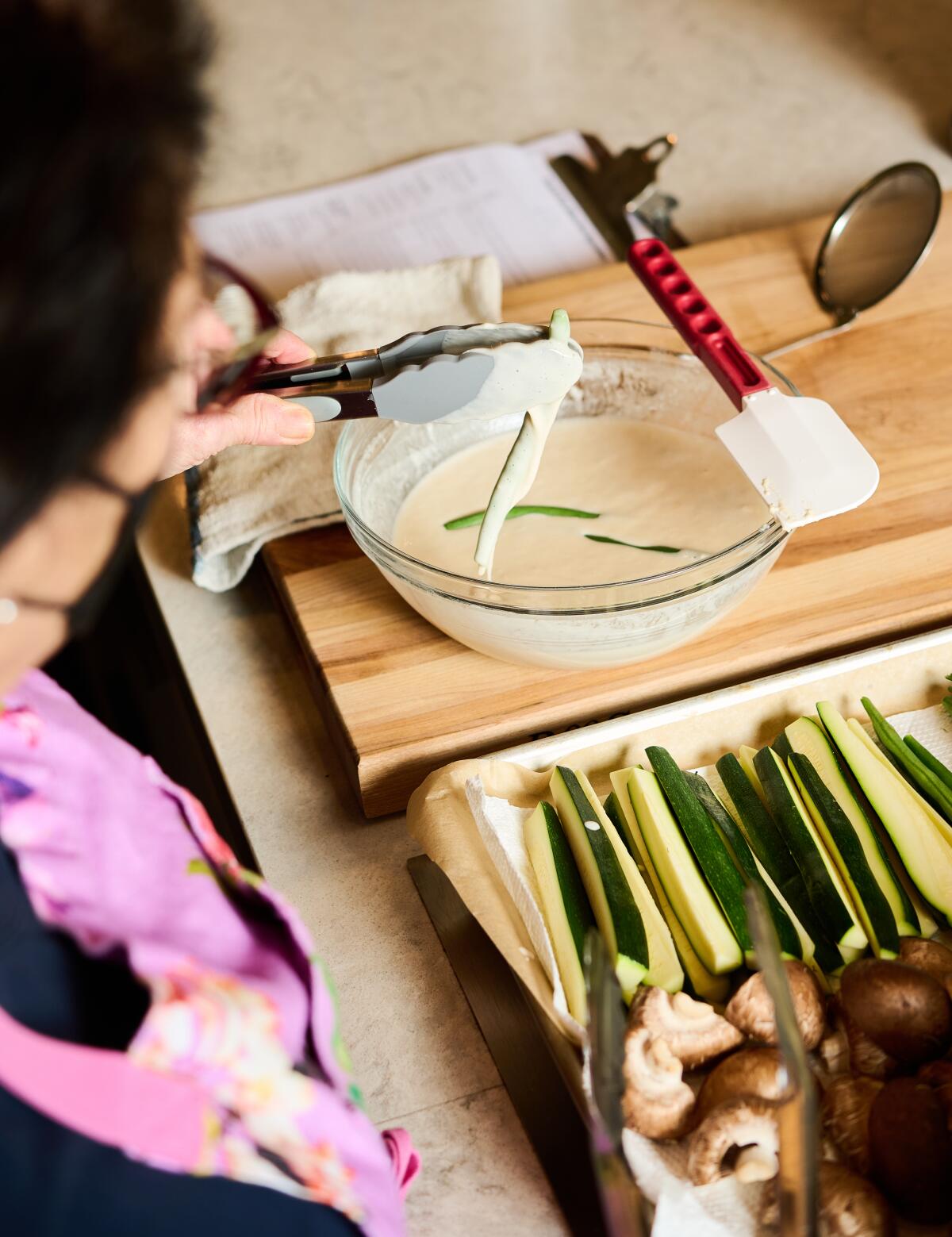
Dip vegetables in batter to make Pezzetti Romano Fritti. The batter is usually quite thick, but this version is a little lighter while still coating the ingredients well.
(Rebecca Peloquin / For The Times)
The Jewish community of Rome dates back more than 2,000 years and has existed there continuously ever since. Over the millennia, Jews were viewed with varying degrees of tolerance and disdain by the broader community, and were sometimes subjected to intense persecution. Most shockingly, between 1555 and 1871, the Jews of Rome were forced by papal decree to live in the Roman ghetto, a four-block-wide gated slum along the Tiber River, overcrowded and prone to flooding. Their personal and spiritual lives were restricted in countless ways, from not being allowed to practice most professions to being forced to attend Sunday mass in one of the churches beyond the ghetto gates.
Ironically, these centuries of fighting helped form a close-knit community with a proud and distinct culture. And its cuisine, defined by its simple but flavorful approach to cooking vegetables, hearty stews and delicate desserts made with almond flour, ricotta and sour cherries, is unlike any other in the world.
One of the professions allowed to Jews during the ghetto period included being friggitori (literally, “fryers”); in other words, street vendors selling fried vegetables and fish to passersby. Along with the abundance of inexpensive, locally produced olive oil, this restriction helped solidify the centrality of fried food in Roman Jewish cuisine. The fact that fried foods are undeniably delicious didn't hurt either.
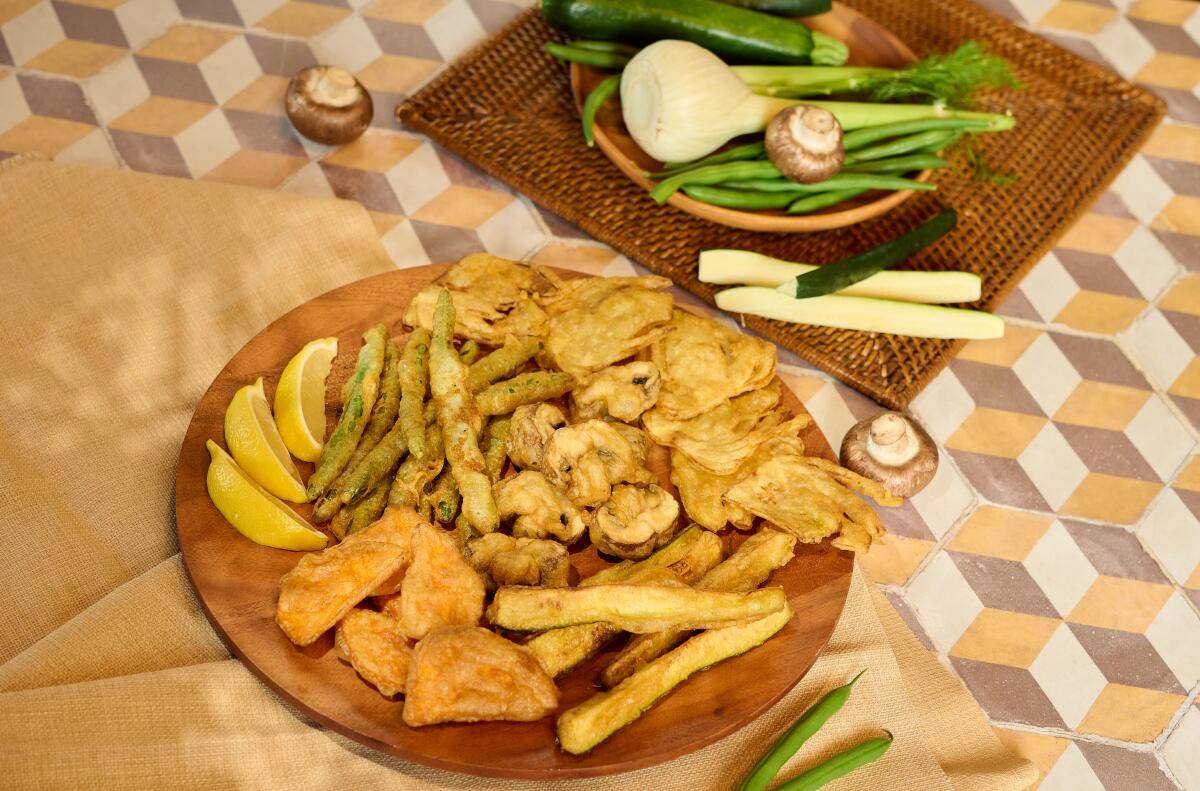
Friggitori (literally, “fryers”) sold fried vegetables and fish to passersby and helped solidify the tradition of fried food in Roman Jewish cuisine.
(Rebecca Peloquin / For The Times)
Today, Rome's 17,000 Jews live scattered throughout the city, but the historic ghetto neighborhood remains a center for the community. And on Hanukkah, like the rest of the year, Roman Jews are fried.
Some fritters, such as fried zucchini flowers filled with melted mozzarella and anchovies, are highly appreciated in all Roman kitchens. Others, like torzelli, a sensual tangle of fried curly endive, are specific to the Jewish community. And still others, like the mixture of battered and fried vegetables, widely called fritto misto (but called pezzetti fritti, or “fried bits,” by the Jews of Rome), are widely enjoyed but have their roots in Roman Jewish cuisine.
Fried mixed greens, which I invariably order every time I dine in Rome (and also love making at home), transform any bits you have in your crisper drawer into edible magic.
The pegazetti fritti recipe from my cookbook “Portico: Cooking and Feasting in the Jewish Cuisine of Rome” calls for green beans, mushrooms, fennel, and zucchini, but you can completely improvise. “Onion, potato, parsnip, even mozzarella — whatever you have is good,” said Giovanni Terracina, co-founder of the Roman kosher catering company Le Bon Ton.
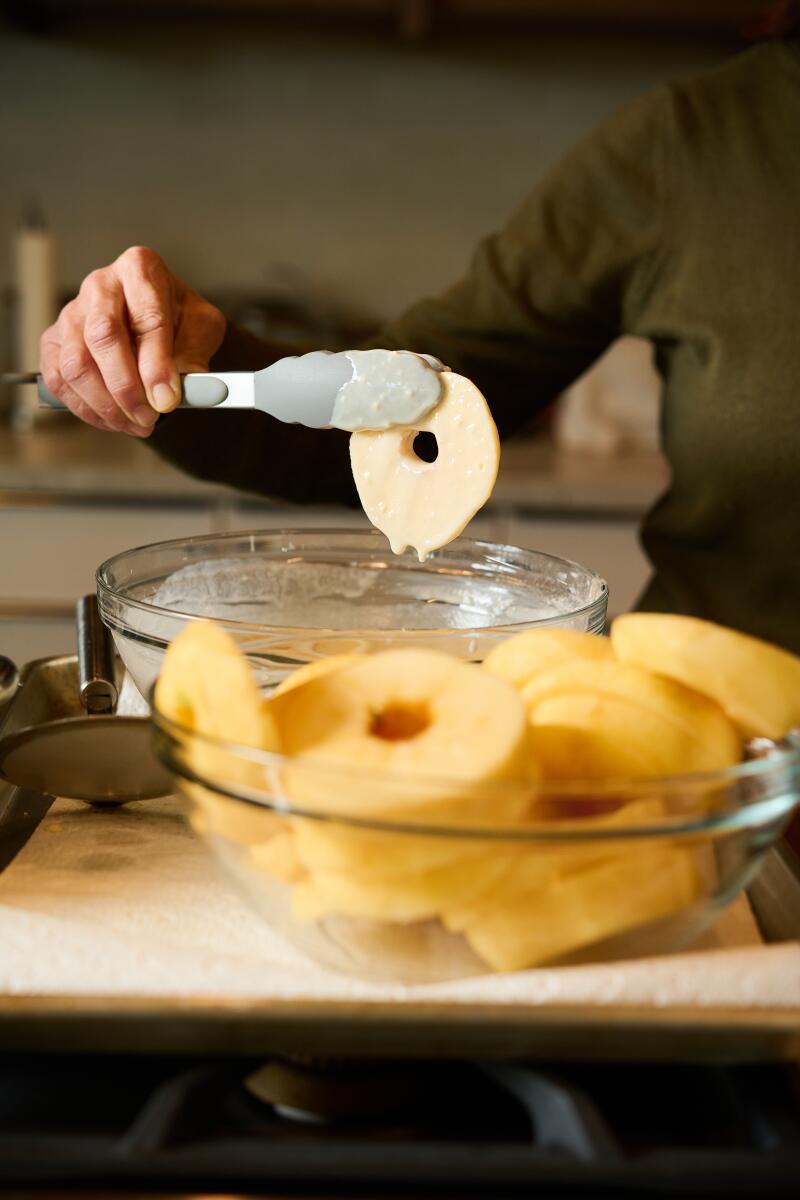
© Rebecca Peloquin (Rebecca Peloquin / for The Times)
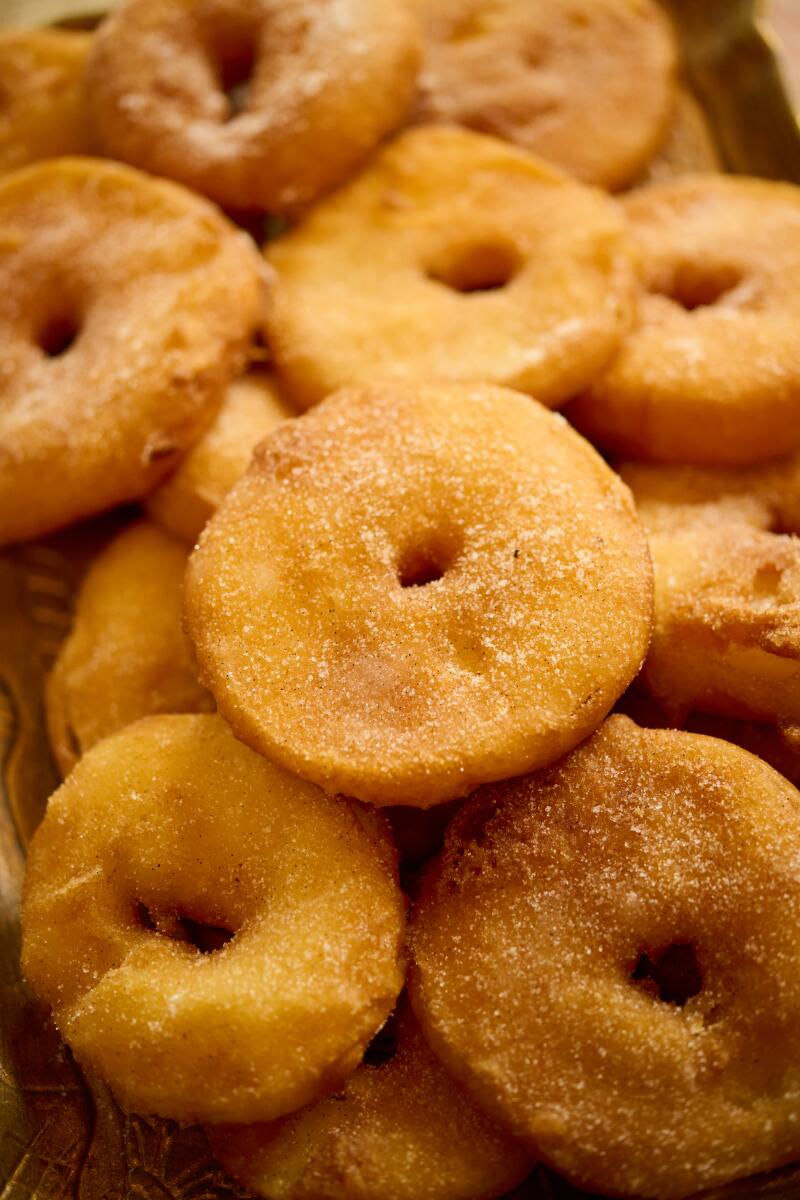
© Rebecca Peloquin (Rebecca Peloquin / for The Times)
In Rome, I learned from Terracina, the doughs are traditionally quite thick and completely cover everything inside. My personal version of the dough is a little lighter, allowing the vegetable mixture to shine. Served with a generous splash of lemon juice, they are magnificent.
The apple fritters, or mele fritte, at “Portico” are another favorite dish. My recipe is inspired by one I found in “Dal 1880 ad Oggi: La Cucina Ebraica della Mia Famiglia” (“From 1880 to Today: My Family's Jewish Cooking”), a handwritten cookbook published in 1982 by Donatella Limentani Pavoncello.
Pavoncello includes mele fritte — apple rings battered and fried until ethereally crispy and light on the outside and sweet on the inside, on your Hanukkah menu. And now me too. Because I will never give up my potato latkes, but when it comes to Hanukkah, why not fry them up too like the Romans do?
Leah Koenig is the author of seven cookbooks, most recently “Portico: Cooking and Feasting in Rome's Jewish Kitchen” (WW Norton). She also writes a weekly Substack newsletter called The Jewish Table.
Get the recipes
Time55 minutes
YieldsServes 6 to 8 servings
Time1 hour
YieldsServes 4 to 6 servings












